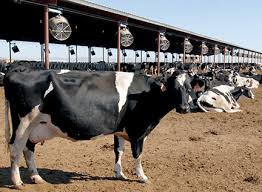Zimbabwe’s millet yield expected to increase by 45 percent
THE country is expecting a 45 percent increase in millet yield in the 2022/23 farming season as the Second Republic’s agriculture transformation strategy continues to bear fruit.
The increase in millet production follows recent revelations that Zimbabwe is one of only two African countries that are self-sufficient in wheat. The other country is Ethiopia.
In 2020 President Mnangagwa launched the Agriculture and Food Systems Transformation Strategy whose objective was to achieve a US$8,2 billion agriculture economy by 2025 but was instead achieved in a record one and half years.
Speaking at the 2023 International Year of millets field day held at Matopo research station yesterday, permanent secretary in the Ministry of Lands, Agriculture, Fisheries, Water and Rural Development, Dr John Basera said millet production is expected to be at 280 966 metric tonnes up from the 100 metric tonnes realised in the 2021/22 season.
“The country saw an increased hectarage for millet this farming season from 523 753 hectares during the 2021/22 season to 533 628 hectares this season. Pearl millet production is expected to be at 71 221mt which is 61 percent more than the 44 143mt produced last farming season. Finger millet production is expected to be 18 610mt, a massive 250 percent from 5 321mt realised last season. The country is expecting total food crops production of 3,2 million tonnes, up from two million tonnes achieved in the 2021/22 season,” said Dr Basera, as he addressed small scale farmers from Matabeleland North and Matabeleland South provinces as well as other key agriculture stakeholders.
The United Nations General Assembly at its 75th session in March 2021 declared 2023 the International Year of Millets (IYM 2023). Food and Agricultural Organisation (FAO) is the lead agency for celebrating the year in collaboration with other relevant stakeholders. Millets can grow on arid lands with minimal inputs and are resilient to changes in climate. They are an ideal solution for countries to increase self-sufficiency and reduce reliance on imported cereal grains.
IYM2023 will be an opportunity to raise awareness of, and direct policy attention to the nutritional and health benefits of millets and their suitability for cultivation under adverse and changing climatic conditions. The Year will also promote the sustainable production of millets, while highlighting their potential to provide new sustainable market opportunities for producers and consumers.
Greater millet production can support livelihoods of smallholder farmers and can provide decent jobs for women and youth. The revenue created can boost economic growth. With the possibility of a health cereal alternative with millets, the risks associated with production shocks can be mitigated.
Dr Basera said there must be an improved seed system so that smallholder farmers and the market have the right seeds to positively contribute to the strategic grain reserves in the country.
“I also challenge Icrisat and all key stakeholders present here to look at the value chain approach, that is from farm to fork and to work with the private sector on mechanisation of production, improving processing equipment and other value addition equipment. The challenge going forward is for us to fully exploit the potential of cereals to address climate change and food security related issues,” said Dr Basera.
He said there is need to climate proof agriculture and one way of doing this is through growing of drought tolerant crops such as millets.
Icrisat was established in to spearhead a program to improve sorghum and millet production in Sadc.
Its main aim is to address problems of food and nutrition insecurity in the region.
Principal scientist (Farming and Systems Analysis), Dr Martin Moyo is the Icrisat country representative. — chronicle









